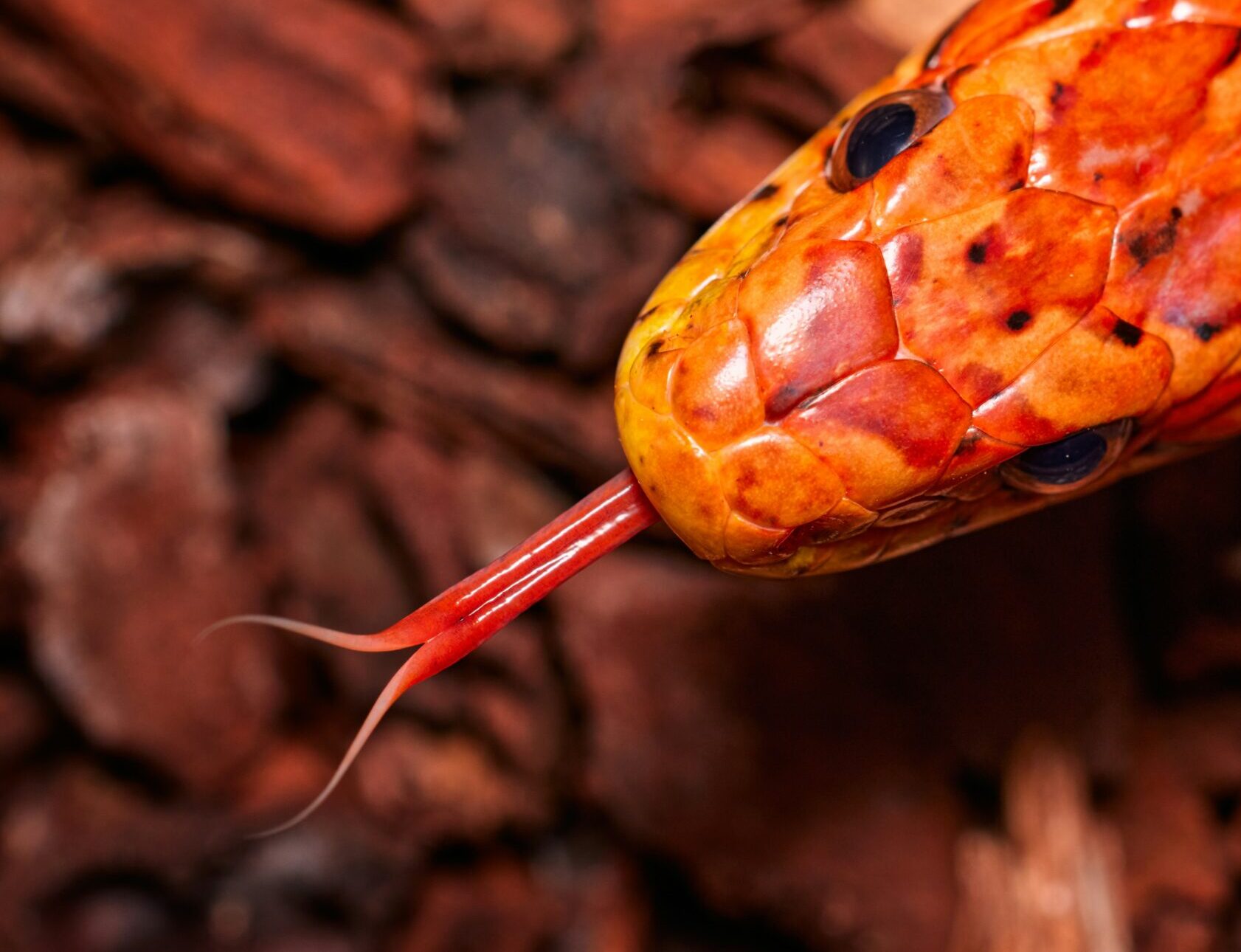
Why Do Snakes Have Forked Tongues?
A snake’s tongue is unlike anything else in the animal kingdom. Long, thin, constantly flicking, and split neatly in two at the tip. It might look creepy or even threatening, but it’s not for tasting blood or delivering venom. That forked design is actually a sophisticated tool for navigation and tracking.
Smelling in stereo
Snakes don’t smell through their noses like we do. Instead, they collect scent particles on their tongue and deliver them to a sensory structure in the roof of their mouth called the Jacobson’s organ ( see article : Why Do Snakes Flick Their Tongues More Than Other Animals )
But here’s the twist: because the tongue is forked, it gathers two separate samples : one from the left, one from the right. This allows the snake to compare the strength of the chemical signals on each side and determine which direction the scent is coming from.
It’s essentially a form of stereo smelling, giving the snake a three-dimensional sense of scent in space. It is basically like having two eyes, or two ears, you would still be able to hear or see with just one but having two is what gives you precision.
A tool for perfect tracking
This feature turns snakes into hyper-accurate trackers. When following the trail of prey, a snake doesn’t rely on sight or sound, it uses tiny differences between the two “scent channels” to decide where to turn. Even if the trail is hours old or invisible to the eye, the snake can follow it with shocking precision.
The forked tongue also helps with mapping territory, identifying rivals or mates, and detecting predators. It’s a constantly updating navigation system, run entirely through chemistry.
And the best part? It works just as well in complete darkness.
